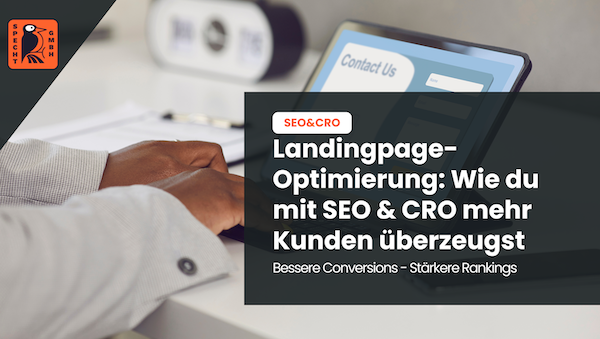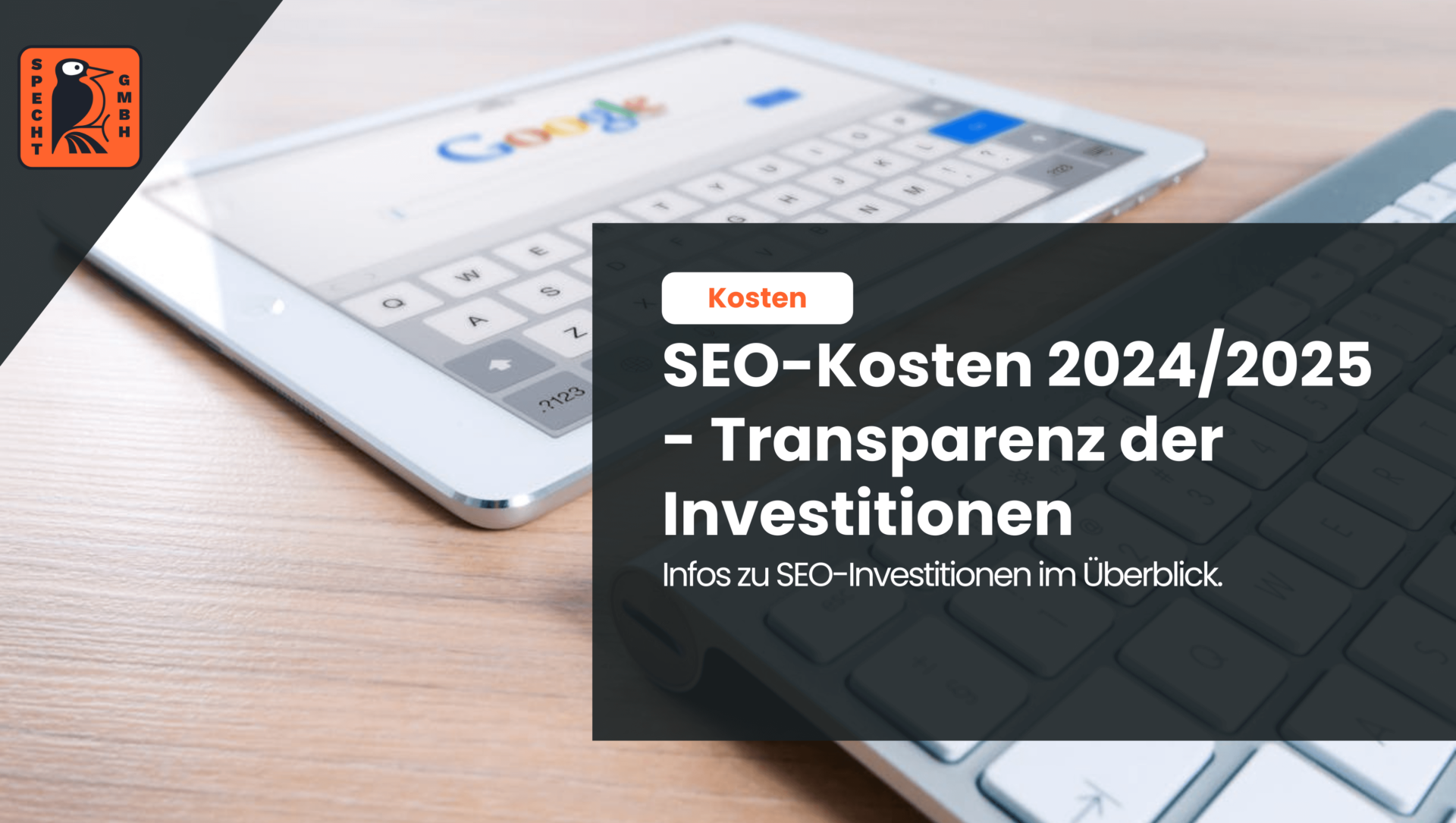In a nutshell: What is content?
The English term "content" can simply be translated into German as "Inhalt". Content is particularly important in online marketing. It generally refers to content on websites such as text, images, graphics, videos, GIFs and music files. However, content is also found on social media and many other channels.
Content: What exactly is content?
"Content" is an English term and means "content" in German. It plays a key role in search enginerankings. But it is also essential for the length of stay of website visitors and for interaction.
The following components belong to Content:
- HTML text
- Text
- Images
- Graphics
- Videos
- Music files
- GIFs
All media content is considered content. In online marketing, the term is defined more narrowly. Outside of online marketing, however, content in media formats such as TV, newspapers, radio and magazines is also referred to as content.
Content vs. information - what's the difference?
Isn't content simply the same as "information"? In fact, there is a big difference. In contrast to pure information, content is specially prepared. It contains information and puts it into context. In this way, it not only conveys knowledge, but also helps people to understand it.
Content refers to various sources of information. While information is objective, content can have a certain coloring. You can use content to subliminally express your opinion and, for example, express your dislike of a topic.
- I am one of the leading SEO experts in Germany
I am known from big media such as Stern, GoDaddy, Onpulson & breakfast television and have already worked with over 100+ well-known clients successful on Google.
Google rating
Based on 185 reviews
Trustpilot rating
Based on 100 reviews
Content as a prerequisite for search engine optimization
Without content, there is no search engine optimization (SEO). This is the name given to measures designed to help achieve a good ranking with search engines such as Google and others. A very large part of SEO is the optimization of content.
The structure, type and quantity of content are relevant for SEO. In general, content is evaluated according to over 200 signals. This is why content creation is given such great importance.
But what exactly happens with content during search engine optimization? Search engines check the entire website to see how much interesting content it provides. Relevant keywords are taken into account.
Search engines also pay attention to which content invites users to stay longer or leads to interactions. Possible interactions include sharing links, writing comments or subscribing to a newsletter.
These interactions, together with the length of stay of website visitors, lead to a ranking. The longer a user stays on your website and the more intensively they engage with your content, the more relevant your website will be rated. This improves your ranking.
Different types of content
Content cannot take just one form. Rather, there are many different aspects that flow into it. Many people only think of text when they hear the term "content". However, many things can be described as content.
Text content
The classic for creating websites: Text. Text content refers to all text content on a website. This includes both continuous text and the names in the menu structure. When a search engine checks your text content, it looks at all of the texts.
It's not just about what's in your text, but also how it's structured. It is important that you distribute the sections well and use meaningful headings. The length of the text is also relevant.
Of course, the choice of words is also essential. Tools for a WDF*IDF check can tell you whether certain terms that are important for your topic are mentioned. This involves terms that are related to your keyword.
Another factor that plays a role in the evaluation of text content is links. This includes both internal links and external links. These are evaluated according to various criteria - for example the anchor texts.
What does text content look like in practice? We have a few examples for you:
- Blog posts and articles
- Website texts
- E-books
- Technical article
Image and video content
Images also count as content and play a major role in terms of SEO. Pictorial content is for example:
- Photos
- Infographics
- Videos
Google and co. cannot yet evaluate the displayed pixels. Nevertheless, they play a major role in search engine optimization.
Image elements break up the text content. This makes it easier for visitors to read and can deepen understanding - for example with infographics. In this way, you can achieve a longer dwell time on your website. Users will engage more intensively with your texts.
Images are also popular social media content. In social networks such as Facebook or Instagram, images attract the interest of users. Many platforms are very image-heavy anyway, so you need to attract the attention of users accordingly.
Users can also share your image and video content from your website on social media. This increases the reach of your website even more and interaction increases.
Social media content
All content - whether videos, photos or texts - in social networks is also referred to as social media content. Depending on the channel, you can publish a different type of content .
TikTok is dominated by short videos, Facebook is a combination of image, video and text and Instagram is very image-heavy. In general, each social network follows its own rules.
However, social media content has one thing in common: it is designed to be shared. So the interaction of your target group is at the top of the list.
Different content formats
Depending on the goal you are pursuing, the target group you want to address and the topic, different content formats are recommended. When creating content, the format in which you publish your content is usually set out in an editorial plan.
Some users prefer to consume one format over another. In addition, the topic often requires a certain format in order to be conveyed accordingly:
- Blog posts
- Technical article
- Social media posts
- Photos
- Illustrations
- Infographics
- Interviews
- Explanatory videos
- Instructions
- Studies and surveys
- Reviews
- Podcasts
- Editorial real image videos
- E-books and white papers
What goals are you pursuing with content?
In general, content is there to achieve a certain reach. Social media and website content is created to reach your relevant target group. Various goals are pursued in the process.
Some want to win new customers with their content. Content therefore serves as a means of acquiring new customers. Others use it to build trust with existing customers. Interactions are often the goal. These can be subscriptions, purchases, likes, comments and much more.
The focus is often also on information. Content can solve problems, provide answers to questions and explain important topics.
Content is usually also used to strengthen your own brand. You can increase your brand awareness by publishing relevant content that appeals to your target group.
And last but not least, you can increase your credibility and improve your image. You can do this by creating targeted content.
Improve your content with these tips
Be it on your website or on a social media channel: When it comes to content, there are a few things you should consider in order to achieve a positive effect. There are a few general tips that apply to both images and text content.
- Structure: Your content should always be well structured. Strictly speaking, this starts with the design of your website. Google must be able to read your page quickly and easily and users must also be able to navigate intuitively and find the information they want.
- Topic: Your content should always match your topic. Therefore, when creating content, pay attention to the focus of your content.
- Ratio: A website that contains only images, only text or only videos will not be successful. Pay attention to a good interplay and use the different types of content in a balanced ratio.
- Seriousness: In order for Google and co. to classify your content as relevant, you should produce professional and serious content.
- Timeliness: Your content should always be up-to-date. Especially when it comes to news, it is important not to publish months after everyone else. You should identify trends and create your content as quickly as possible. But there is also content that is always up to date. This is also known as evergreen content.
- Branded content: This allows you to make your own brand or your services and products accessible to your target group. Branded content describes an inconspicuous brand placement within your content. This helps users remember your brand.
There are also some tips that only relate to text or image content.
Tips for text content
With text content, a distinction is made between unique content and duplicate content. Content that can be found one-to-one on other websites is considered copied - i.e. duplicate content. It offers no particular added value and Google classifies it as "stolen", i.e. irrelevant. Your ranking drops.
However, if you rely on unique content, you can significantly improve your ranking. Such content cannot be found anywhere else on the internet and offers clear added value. This is clear - after all, such content arouses the interest of visitors and ensures that they stay longer.
Tips for image content
To ensure that visual content has the desired effect, you should assign alt tags, image titles and descriptions. This is the only way that images, infographics and videos can be evaluated by Google. Keyword: image SEO.
The size of the image files also plays a role. Pay attention to size optimization so as not to worsen the page speed (loading time) of your website. Slow loading times are penalized by Google, so you will quickly slip further down the rankings.
-
Free
SEO strategy meeting
In a free SEO strategy talk, we uncover untapped potential and develop a strategy to help you become more successful on Google.

- More organic visibility
- More organic visitors to your website
- More inquiries & sales
Content marketing
As the term suggests, content marketing is closely related to content. It refers to measures for the distribution of content. The aim is to convey advertising messages, increase reach, reach the target group or achieve other corporate goals.
Content marketing does not only refer to website content. Social media content is also distributed using content marketing. This is also referred to as social media marketing. And email marketing is also considered a sub-category of content marketing.
Content creation cycle
How difficult can it be to create high-quality content? In fact, you can't see it in a lot of content because it has been optimally prepared for the readership, but a lot of work goes into creating content.
You should therefore first familiarize yourself with the process before you start creating text, image, video or audio content yourself. Text creation can be described as a kind of cycle. This consists of:
- Research
- Planning
- Creation
- Distribution
- Analysis
If you follow these steps, you can publish high-quality and, above all, effective content .
Content is usually planned by a content manager. The content manager first obtains a precise overview of the topics to be covered. The first step is a content audit. This involves precisely analyzing existing content.
This forms the basis for the research. It serves to identify potential. Which content is suitable for the website or social media channel? Which topics are well received by the target group and promise high-quality results?
The process then moves on to planning. In this step, the key data relating to the new content is defined:
- Content format
- Topics
- Keywords
- Length
- Wording
The to-dos are also assigned to different employees or participants.
Only then does the actual creation of the content begin. This is based on all the previous steps and the findings from them.
And how is content distributed? There are various ways to do this. Some rely on a content management system (CMS for short) through which the content is published and thus made accessible to the masses.
Once the content has been published, measures must be taken to increase its visibility. Search engine optimization is one of the classic methods of distribution. However, there are also other options. A marketing mix is advisable to promote the content via various channels.
The final step is an analysis. This serves to determine the reach and impact of content. You can draw valuable insights from this for subsequent content:
- What is well received by my target group?
- How does my target group react to certain content or content formats?
- What works less well and should be avoided next time?
- Which channels were used most frequently to consume the content?
Then the cycle starts all over again with the research.
Conclusion: What is content?
Content stands for media content of all kinds. From images and videos to audio content and, of course, texts, everything is included. Content is relevant for websites, social media platforms and many other areas.
In the discipline of content marketing, content is distributed in order to achieve various goals. Content is therefore a valuable building block for your company's marketing.
- Do you know my SEO newsletter?
Register now and receive regular tips from the experts.






